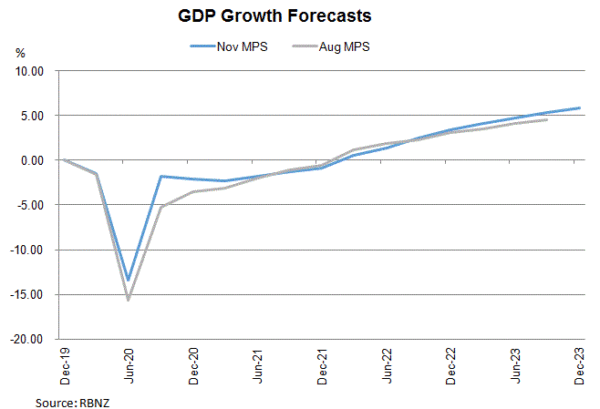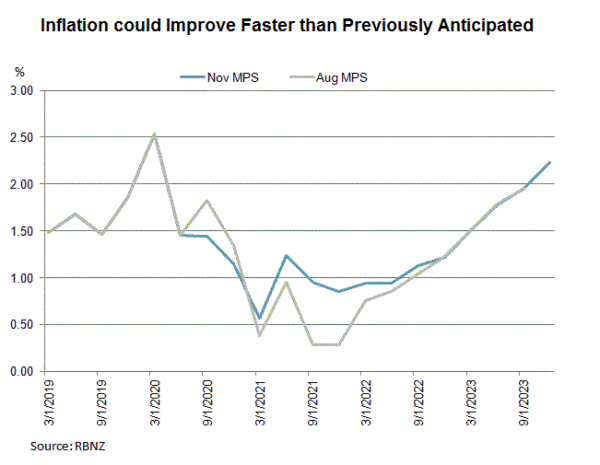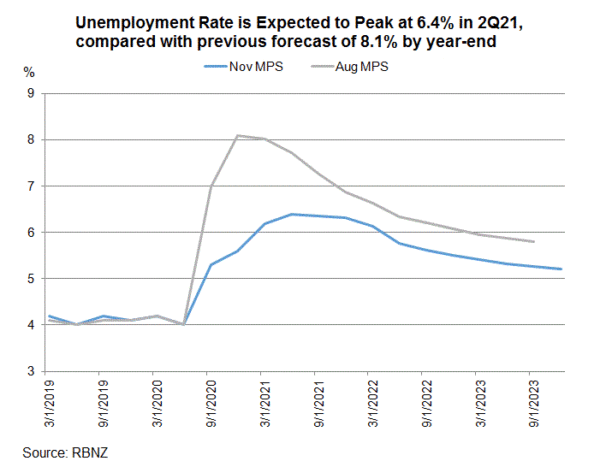RBNZ announced that a Funding for Lending Program (FLP) will be implemented in “early December” with an initial size of about NZD 28B. Further details will be announced in coming weeks. The program aims at providing loans to commercial banks at low cost (e.g.: 0.25%). The central bank left other monetary policy measures unchanged: OCR at 0.25% and the cap of the Large Scale Asset Purchase (LSAP) program at NZD100B. Kiwi jumped as policymakers appeared more upbeat about the economic outlook.
The members were upbeat about the economic developments. Governor Adrian Orr suggested that “the economic activity since August domestically and internationally has been more resilient than earlier assumed”. Domestically, growth was “evident across a range of indicators, including employment, household spending, GDP, and asset prices. These outcomes reflect the effectiveness of the health and economic policy responses to the initial shock”. While noting that “inflation and employment have been below target for a long time”, he added that the country is “starting from a better position because the domestic economy has proved more resilient”. Despite better-than-expected economic developments, the central bank continued to warn of the uncertainty about the pandemic.
The central bank also maintained a dovish tone regarding the monetary policy. While introducing FLP, RBNZ reiterated that negative interest rates remain an option. It suggested that progress has been made on the operational ability to deploy a negative OCR. While maintaining the forward guidance that the policy rate will stay unchanged at least until March 2021, RBNZ also reaffirmed that an “FLP, a lower or negative OCR, purchases of foreign assets, and interest rate swaps remain under consideration”.
We see the chance of negative rate is reduced. Although RBNZ remains cautious about the downside risks to growth, it is obviously more confident about the outlook as the pace of recovery has been faster than previously anticipated. At the updated economic projections, the members now forecast the unemployment rate to peak at 6.4%, compared with 8.1% projected in August. Inflation forecasts were also upgraded for 2021 through to the third quarter of 2022.















